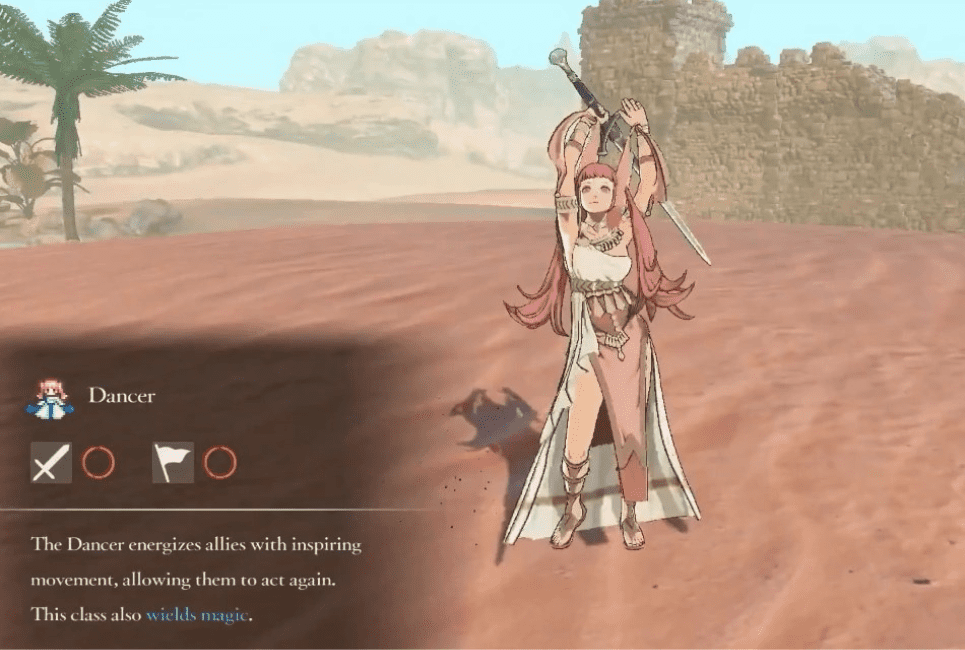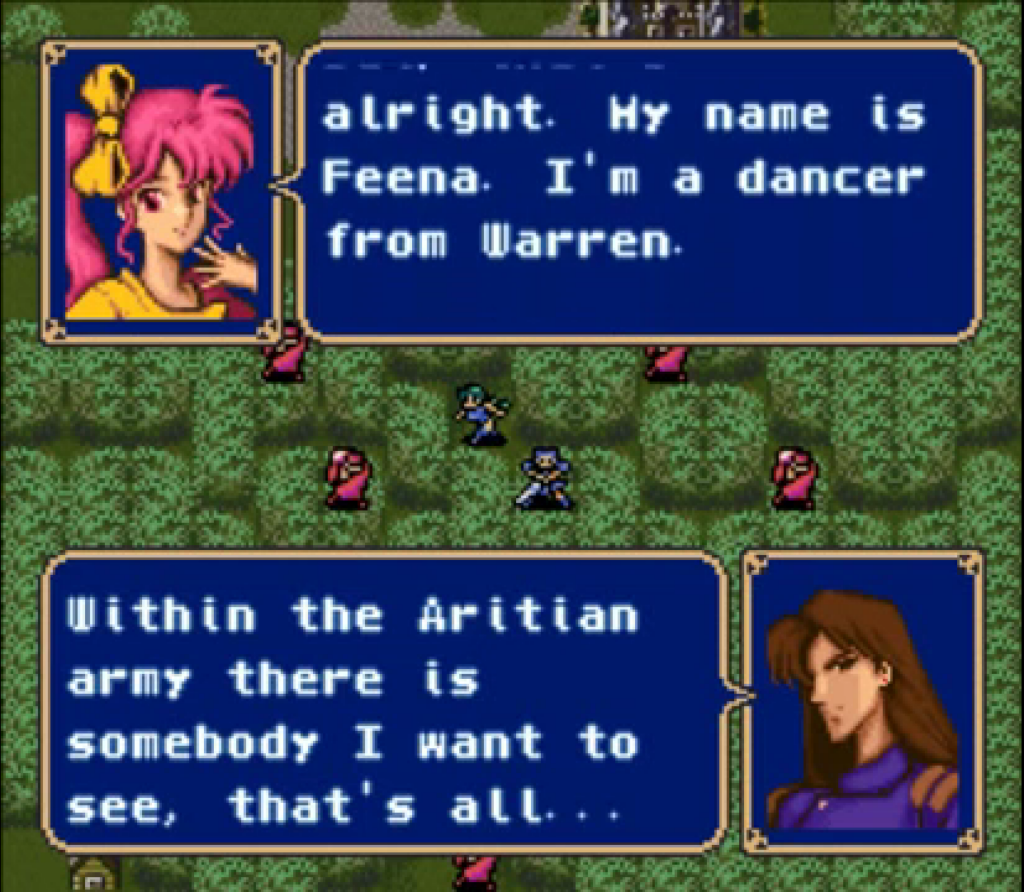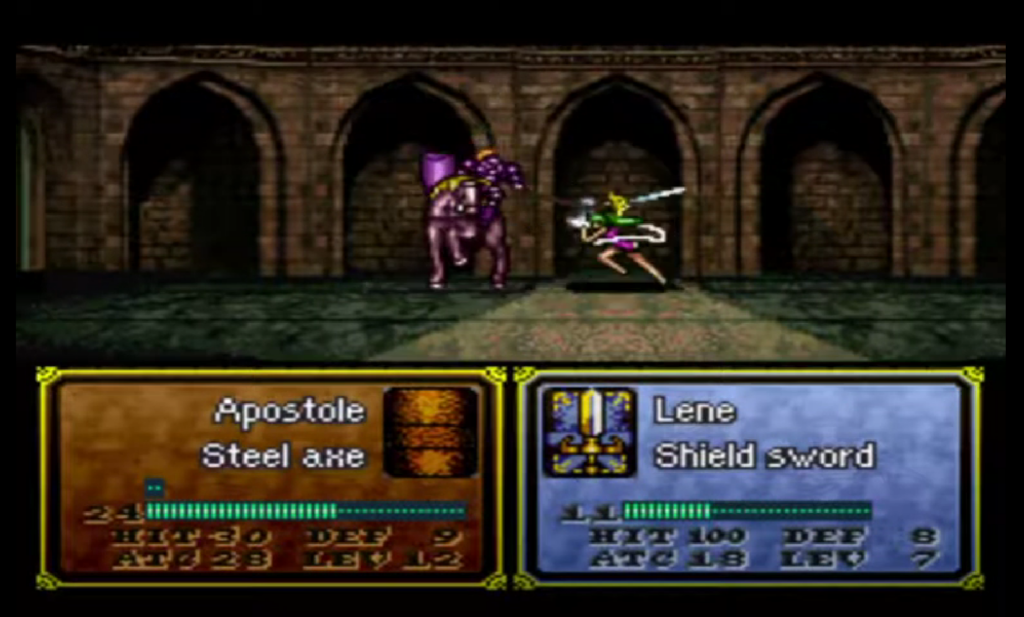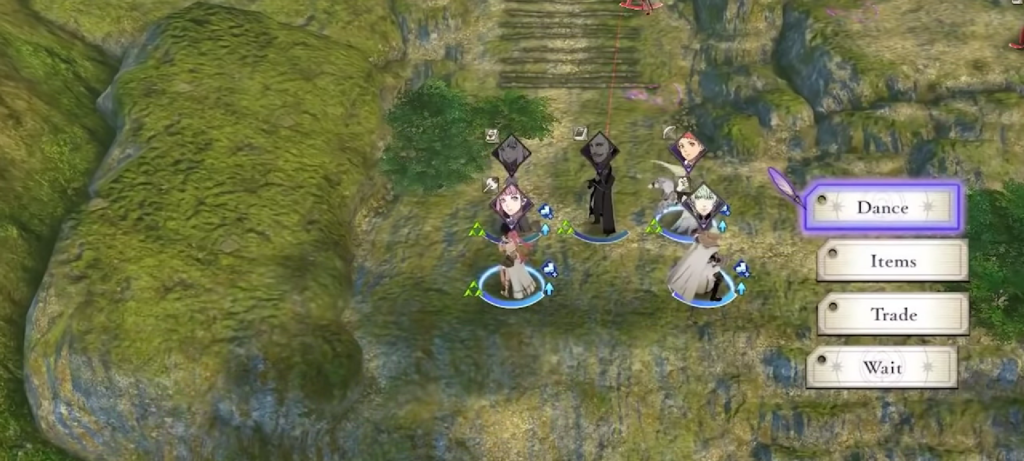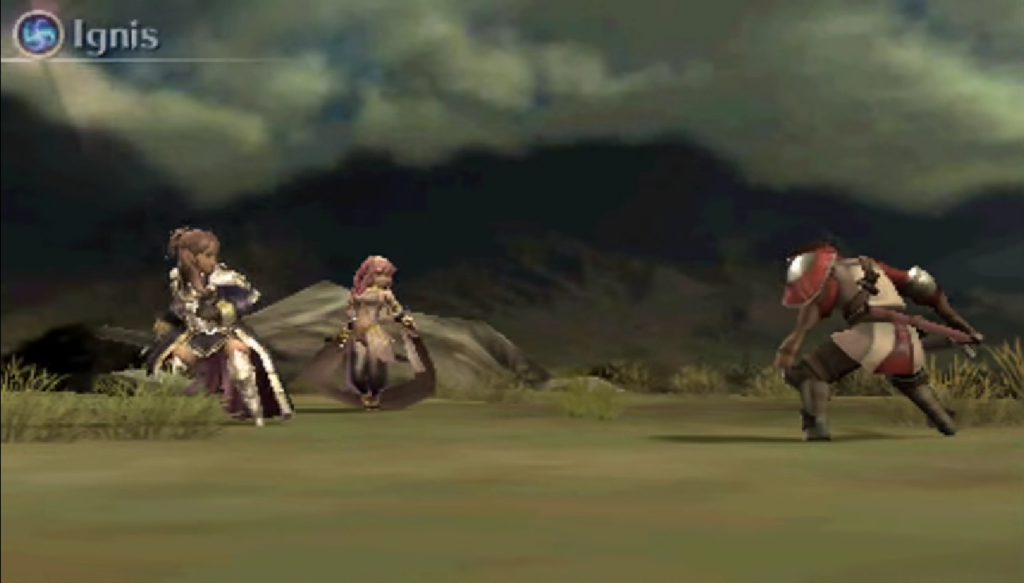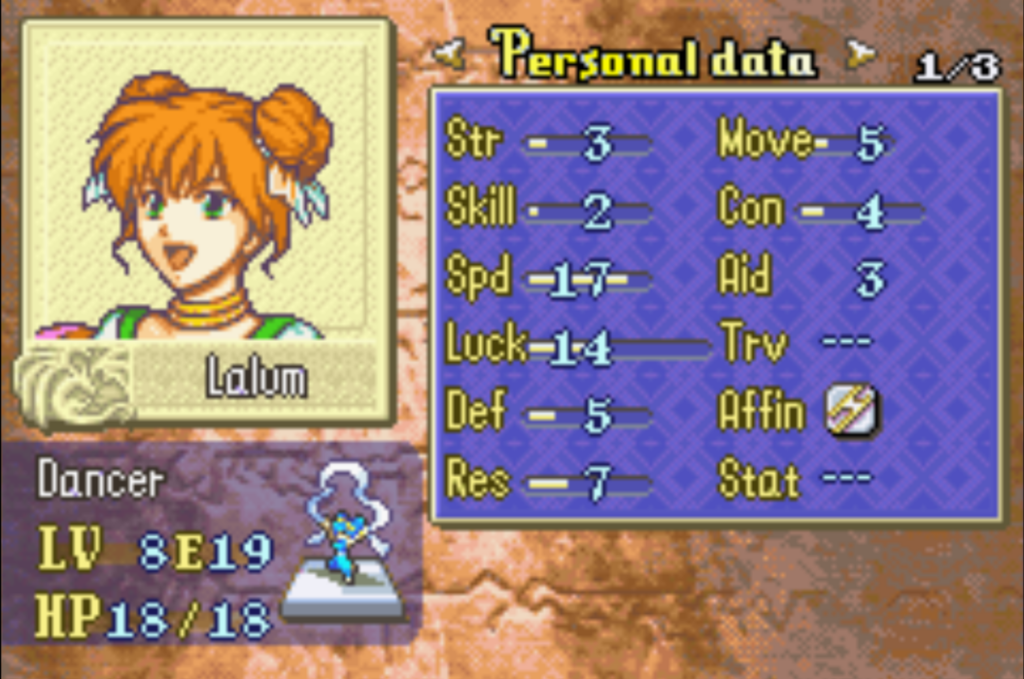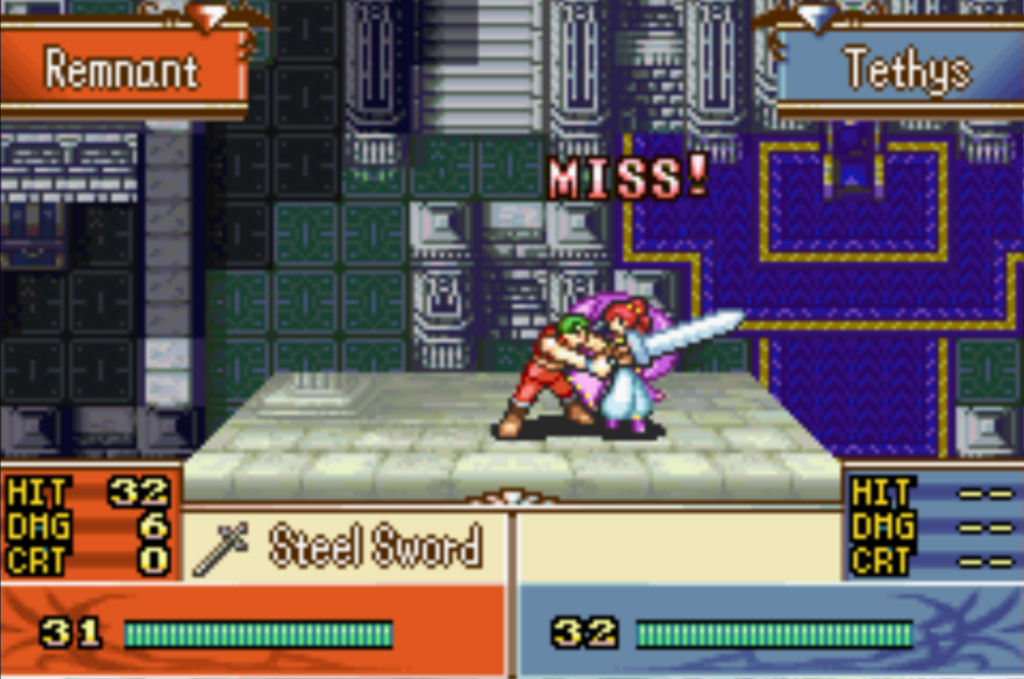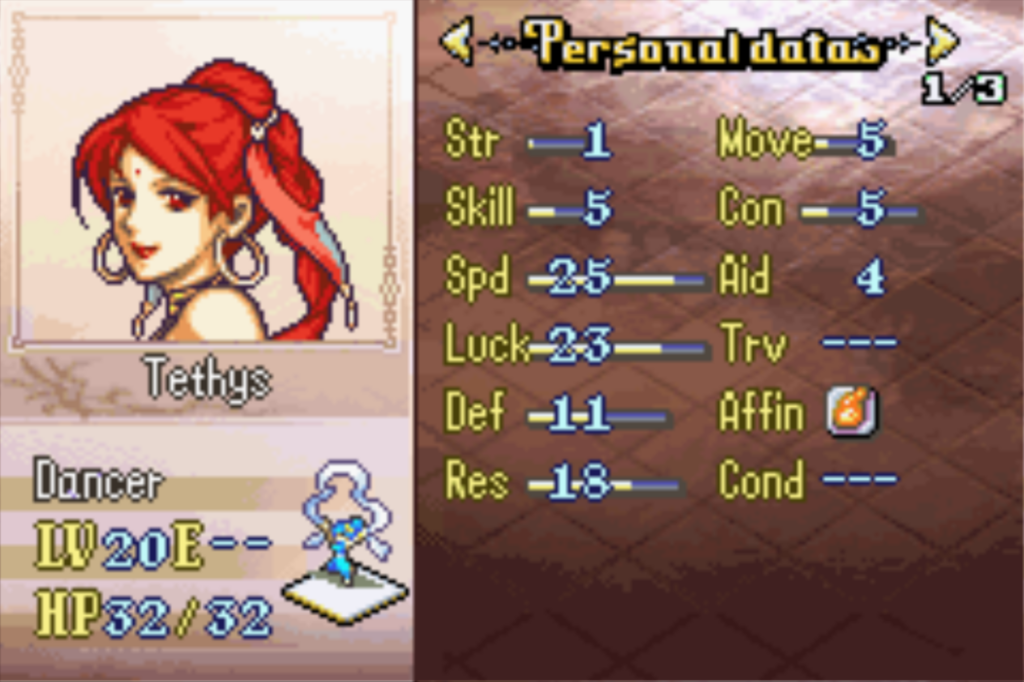- Fire Emblem Wyvern Rider - June 23, 2022
- Fire Emblem Assassin - June 8, 2022
- Fire Emblem Wyvern Lord - June 8, 2022
When I think of the Dancer class in Fire Emblem, it brings me back to a scene between Jon Snow and Ygritte in Game of Thrones. It’s the one when Jon explains the purpose of drummers in an army, and Ygritte is unable to wrap her head around the concept. Why be on the battlefield if you aren’t fighting?
Those new to Fire Emblem might have a similar first opinion on Dancers. After all, we’re talking about a series where Mages can throw a blizzard at your face. A series where people wielding lances ride atop mini dragons and swoop down to eliminate their enemies. Why on earth would a dancer ever be in a place like that? What role could a dancer possibly play in war?
That role is a pretty critical one. It could be the difference between you winning a battle or getting served (I couldn’t talk about Dancers without making at least one You Got Served reference. Sorry).
Don’t believe me? Fair enough. Allow me to explain why every Fire Emblem player will want a Dancer putting the moves on your army.
History of the Dancer
The Dancer class debuted in Mystery of the Emblem. The character of Phina served as the first Dancer in the series. I’ve always loved how Dancers mostly dress like they stole clothes out of Princess Jasmine’s wardrobe. Very elegant, I must say. They must be pretty sneaky to get past Rajah.
Despite being a Dancer, Phina is far from a damsel in distress. In the Dancer’s debut appearance, the class had access to Swords. For reasons I’ll get into later, this ability isn’t as good as you might think, but it at least gives Phina a means of defending herself.
Dancers return in Genealogy of the Holy War with one playable in the first generation and two Dancers playable in the second generation. Dancers return their access to Swords, and it comes in handy thanks to a series staple introduced in Genealogy of the Holy War: the Arena.
The Arena in Genealogy of the Holy War is the most player-friendly in the series because you can’t die. Any modern-day Fire Emblem player knows how painful it is to reset a Chapter after hours of Arena grinding because the game pits you against a Swordmaster with a Silver Sword who instantly KOs you with a crit. Dancers capable of using Swords means you have more units to grind the Arena.
Thracia 776 introduces one more Dancer to the series, though you can easily miss her. Lara is a Thief by nature but has the option of promoting into a Thief Fighter or a Dancer. She can even become a Dancer even if you made her a Thief Fighter first.
Dancers appear in all three GBA Fire Emblem games but have lost access to Swords. The Dancer of The Blazing Blade, Ninian, has some unique abilities. There are four special rings in The Blazing Blade that only Ninian and her brother Nils can use. These rings are Ninis’ Grace, Filla’s Might, Thor’s Ire, and Set’s Litany. Depending on which you use, Ninian can increase an ally’s Defense and Resistance, Attack, Critical Hit Chance, or Avoid by 10 for a single turn.
Dancers are temporarily absent during the Tellius Saga, but they reappear in Awakening. Once again, they have access to Swords. A single Dancer, Azura, technically shows up in Fates. However, she appears as the sole Songstress of the game. Functionally, the Songstress is the same as the Dancer, though, given it is music-based, it feels more like a counterpart of the Bard class.
The Dancer class appears in Three Houses with a single character capable of becoming a Dancer (Which is probably a good indication of how Dancers rank as a class, but we’ll get to that). The Dancer class in Three Houses is unique in that it’s the first time male characters can be Dancers. Usually, male characters serve as Bards.
Three Houses gives Dancers a lot more versatility than any other game in the series. Along with having access to Swords, they have access to Authority, Faith, and Reason magic.
What Makes A Dancer?
Dancers are a female-only class outside of Three Houses. They are one of the few base classes in the series that rarely have access to any promotion options. Their claim to fame is their ability to Dance, which allows them to refresh any unit outside of other Dancers or Bards.
Any refreshed unit instantly gains another turn of action. And it should go without saying that this utility is insanely valuable. I commonly use my Dancer on a Staff user to heal multiple units per turn or Warp more than once in a single turn. It’s also fun refreshing your top damage dealer so they can clean up the enemy forces quicker. Whatever you do, being able to give 99% of your units an extra turn will never lose value.
For this reason, the Dancer’s combat value is virtually zero. Even in the games where they can use Swords, or Three Houses where they can use some magic, Dancers will never be your best offensive units. They will, however, always be the only characters that can Dance, so that’s what they’re best off doing. That is especially the case pre-Thracia 776, where Dancers could refresh all adjacent units.
The growth rates of the Dancer class haven’t exactly been consistent over the years. The only thing you can count on is them having horrible Defense. But besides that? Phina has high growth rates in everything except HP (Which is average), Defense, and Resistance (Which are horrible). Silvia, Lene, and Laylea have fairly mediocre growth rates in all stats.
The GBA era is where we finally got some consistency within the class. Larum, Ninian, and Tethys all have very high HP, Speed, and Luck growth rates. Larum’s Resistance growth rate is decent for a non-magic class, and Ninian and Tethys have sky-high Resistance growth rates. Olivia in Awakening retains high HP, Speed, and Luck growth rates and gains respectable Strength and Skill growth rates since she can attack enemies.
There are two things unique to the Dancer/Bard that give them an edge over every other class in the series. And that’s the fact that their stats don’t matter as much. Why? Because Dancing is their primary utility. You ideally want to keep your Dancer out of harm’s way. So it doesn’t matter if their Speed is so low they get doubled, or their HP is so low they get one-rounded. 99% of the time, they won’t run into enemies anyway.
The only real exception is long-range threats like ballistae or long-range spells like Bolting or Purge. But these are pretty rare. But I understand you not wanting to leave your Dancers out to dry. If you feel obligated to level them up as much as your other units, by all means, do so. There are advantages to that as well.
Dancers and Bards level up much slower than other units because refreshing characters only gives them ten experience points per use. For Dancers with access to weapons, you might feel compelled to hand them a kill or two or send them into the Arena to speed things up. The GBA Dancers have no offensive options and thus will level up the slowest out of all Dancers in the series. They are also some of the most valuable Dancers to max out.
But once again, Dancers have something going for them that allows them to circumvent this problem. Dancing takes up zero resources. So long as you aren’t doing a ranked run, you can level your Dancer to max level in the first Chapter they join your army. Should you? It depends on the game. From The Binding Blade onward (Phina, too), Dancers function exceptionally well as dodge tanks and are at low risk of suffering from critical hits. In The Blazing Blade and The Sacred Stones, Dancers are great walls for magical enemies thanks to their high Resistance growth rates.
Now don’t get me wrong. Maxing out a Dancer as soon as you get one is a very unfun process. Unless playing on an emulator where you can speed up gameplay, it’s also a long process. I find a happy balance is to level up your Dancer a couple of times per Chapter.
Dancers have low Movement, as expected of an infantry unit. Alongside my main Lord, my Dancer is typically a top candidate for a pair of Boots to help her keep up with my army. You might find yourself rescue dropping your Dancer with a mounted unit like a Paladin to ensure they’re near the character you want to refresh.
I also like giving my Dancer an Angelic Robe. Dancers have terrible Defense, and despite their typically high HP growth rate, endgame physical units will still be a threat to them. The additional HP tends to be enough for Dancers to survive an unexpected blow. Since their Speed stat is high, you never have to worry about enemies doubling them, outside of something like Brave weapons.
I don’t recommend giving Dancers a stat booster like a Dracoshield to improve their mediocre Defense. Will it help them? Of course. But they shouldn’t be in harm’s way of physical units enough times to warrant giving them a Dracoshield. Save stat boosters like those for a frontline offensive character.
How Many Playable Dancers Exist In Fire Emblem?
While Lara can promote to a Dancer, she starts as a Thief, so she technically doesn’t count (Since some might elect to keep her a Thief Fighter). In total, 9 Dancers have appeared across the series.
- Phina (Mystery of the Emblem, New Mystery of the Emblem)
- Silvia (Genealogy of the Holy War)
- Lene (Genealogy of the Holy War)
- Laylea (Genealogy of the Holy War)
- Larum (The Binding Blade)
- Ninian (The Blazing Blade)
- Tethys (The Sacred Stones)
- Olivia (Awakening, Warriors)
- Azura (Fire Emblem Fates)
Is The Dancer Class Good?
In my opinion, it’s the best class in the series, no contest. While Bards are functionally identical to Dancers, they appear more infrequently, hence the Dancers’ advantage over them.
Dancers can make anyone except themselves have two turns during your player phase. You can’t beat that level of utility since it allows for additional usage of any and all utility that these other units have.
In some games in the franchise, Dancers can even make for good bait/distractions for certain enemy types. And if you really want to, you can turn your Dancers into mini Myrmidons with relatively high critical hit potential.
10/10 class that everyone should field.
Who Is The Best Dancer In Fire Emblem?
I had a little trouble with picking this one. There are some strong secondary candidates out there.
While Lara doesn’t start as a Dancer, you can and should make her one as soon as possible. But the kicker with Lara is that while she’s no longer a Thief, she retains her ability to use Lockpicks on chests and doors. That arguably gives her the most utility of any Dancer in the series.
However, Lara is one of just two Thieves in Thracia 776, so her Lockpicking abilities will remain essential. It’s not like Sword-usage where it’s no question to Dance over having a Dancer attack anyone. That means she may not always be Dancing every turn.
The difficulty in the newer games is generally much lower than in older titles. That gives more value to the older Dancers. But if I had to choose, I would say Azura from Fates is the best in class. It’s totally not because she shares the same name as my favorite Daedric Prince from Elder Scrolls.
Fire Emblem Fates, specifically Conquest, is probably the most difficult Fire Emblem title after the GBA era. The significant drop in your ability to grind makes things much harder, and you feel the loss of a single unit. When a character dies in Conquest, all the experience they gained dies with them. Naturally, the Singing ability (Remember, she’s a Songstress, not a Dancer) really comes in handy in Conquest. But it’s not just her ability to Sing. It’s because Azura can do it more than once in a single turn. Yes, you read that right.
After Singing with Azura, use a Cavalier unit to shelter her. Switch to Azura, and she will be able to sing again. That’s pretty busted. I hope that trick makes your playthrough of Conquest a little less frustrating.
FAQs
Question: Are any Dancers in the series bad?
Answer: None. It’s hard for Dancers to be less than top-tier since their stats mostly don’t matter, and their utility is invaluable.
Question: Who is your favorite Dancer in the series?
Answer: My favorite is Larum from The Binding Blade. Binding Blade Hard Mode is no joke, and you’d be crazy not to field Larum. You need Larum to recruit the Hero Echidna. On the surface, Echidna isn’t a particularly great pre-promoted unit, but on Hard Mode, she’s extremely useful.
Question: How do I become a Dancer in Three Houses?
Answer: To gain access to the Dancer class, you have to win the White Heron Cup dance competition on 12/16. Just remember that you can only have one Dancer in Three Houses. Make sure the character you pick isn’t someone you’ll want to use in a different class.
Conclusion
There you have it, folks. Dancing> Dragons, Magic, Swords, Lances, Arrows, and everything else the Fire Emblem series throws at you. Maybe you’ll look at ballet dancers differently from now on. Or Raqs Sharqi dancers. Or whatever dance style these ladies are using exactly. I have no idea. They move their bodies and twirl around. Which sounds like the Buddy the Elf School of Dancing, but I digress.
For more Fire Emblem guides check out:

